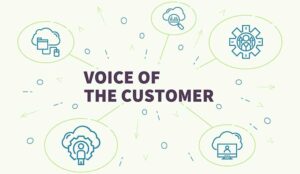Few things are more frustrating for customers than getting stuck in a lengthy call queue only to eventually reach a call agent who doesn’t know who they are and can’t solve their problem.
But smart call deflection can prevent you from wasting customers’ time and, consequently, hanging up the phone and turning to a competitor with better customer service.
Customers increasingly want to spend less time on the phone with human call agents. Instead, they want to be able to quickly solve their own issues using chatbots or online knowledge bases to find the information they need.
Call deflection allows you to build a customer service strategy that helps you manage customer requests more effectively, streamline your contact centre processes and manage call agents more efficiently.
What Is Call Deflection Really About?
Call deflection enables you to reroute customers from call centres to other communication channels like live chat and websites.
The true call deflection meaning is to reduce inbound call volumes by enabling customers to access alternative digital media.
As a result, call deflection removes the stress from busy call centres, enabling customers to avoid long hold queues and freeing up agents to focus on more challenging problems.
This more convenience-driven approach allows customers to find solutions to simple and common issues, such as changing their password or address, without speaking to a call agent.
The Link Between Call Deflection and Customer Experience
Because customers increasingly prefer to solve problems by themselves (finding information online or using chatbots for self-service), call deflection is intrinsically linked to improving customer experience.
When executed effectively, call deflection gives customers a sense of control by allowing them to either continue with a phone call or switch to their preferred channel.
As a result, your call deflection strategies should prioritize customer needs to deliver the type of experience they want.
Those strategies will help improve your call centre deflection success, giving customers answers as quickly as possible while still giving people the option to speak to a call agent when needed.
The Role of Call Deflection in Meeting Customer Expectations
Call deflection is often considered a strategy for companies to reduce costs. However, arguably its most crucial benefit is to help you develop user experiences and journeys that customers love.
(After all, effective call deflection can help customers get the answers they need more quickly and ensure more people are satisfied with your customer service.)
Successful call deflection begins with analyzing customers’ behavior, preferences and historical data.
That includes understanding the most common inquiries people make via phone calls to identify opportunities for call deflection.
From there, you can promote alternative channels that help people gain quicker responses and resolution through online widgets, chatbots, pop-up messages and channels like web chat, email and social media.
Common Pitfalls of Call Deflection
However, call deflection is easy to get wrong without a clear strategy in place. Common pitfalls of ineffective call deflection include:
Offering Callbacks
Some companies attempt to provide call deflection by giving callers the option to leave a voice message and receive a callback.
While that goes some way to reducing call queues and hold times, it’s not entirely effective as it still requires an agent to call the customer back.
That callback often isn’t prioritized, which leaves customers waiting and, if they don’t pick up the call, doesn’t help to solve their problem quickly.
Rearranging Call Agent Tasks
The goal of deflection is to reduce busy call agents’ work, but ineffective call deflection can simply result in rearranging their workload.
It’s therefore crucial to consider where the workload is being moved and how well-equipped your employees are to handle it.
Failing to Meet Customer Needs
An effective call deflection strategy relies on understanding how, when and why customers contact you, their preferred channels and where they may require extra attention.
Overlooking those key factors can easily sabotage any efforts to solve high-volume customer service issues. (Good news: interaction analytics can help.)
The Hidden Costs of Ineffective Call Deflection
Call deflection should reduce the repetitive issues that call agents have to deal with. It should also help to speed up callers’ customer service experience.
So, the costs of not getting call deflection right are failing to reduce call agents’ workloads and not helping customers achieve the self-service and quick resolution they require.
The hidden costs of these consequences include:
Agent Burnout
Many call centres face significant challenges around employee burnout and stress. Call agents tend to work on controlled schedules with high pressure to deliver results using monotonous scripts and dealing with frustrated customers.
For example, Cornell University research found that 87% of call centre workers had “high or very high” stress levels in the workplace and more than 50% were emotionally drained, felt burnout or were prescribed medication for anxiety or stress due to their work.
Poor Customer Relationships
Stressed-out and exhausted call agents are more likely to be absent from work or underperform when they are present.
This can hinder workplace morale and productivity while increasing staff turnover. Furthermore, stressed or unhappy employees will likely cause customer service challenges that affect client relationships and customer satisfaction.
Dwindling Customer Experience
When agent performance drops off, so naturally does the customer experience they offer. Disengaged agents are less likely to provide the level of engagement customers expect, meaning less first-time resolution, increasing the time it takes to resolve an issue and making customers repeat information.
Customer Frustration
Ineffective call deflection can result in customers not having access to the self-service tools they demand.
This, paired with a poor customer experience, will encourage them to look elsewhere and turn to competitors that offer the level of service they require.
Financial Costs
Besides affecting customer experience, disengaged employees will likely cost your contact centre money.
According to Gartner, unhappy call agents are 84% more likely to look for a new job, which means you’re continually looking to replace them. These high turnover rates can be costly in terms of onboarding and training replacement agents.
Key Metrics to Track Call Deflection Success
Achieving call deflection success requires monitoring several key metrics. This includes closely tracking call volumes and call agents’ average speed of answer times, as well as the amount of time customers spend in call queues, the time agents spend on after-call work and customer satisfaction levels.
You should also consider financial implications like the cost per call and revenue per successful call. Tracking these metrics offers vital insight into your call centre’s performance and enables you to prioritize where to improve your call deflection efforts.
5 Strategies for Effective Call Deflection
Here are a few effective call deflection strategies that can help you cultivate positive customer experiences:
Automate Call Centre Processes
Many contact centres are hindered by manual, time-consuming tasks that prolong calls and frustrate customers and agents alike.
But call centre automation and artificial intelligence (AI) give you tools to eliminate these pain points.
For example, robotic process automation (RPA) uses bots to accelerate, improve, simplify and streamline processes across your call centre.
In practice, this lets you detect customer intent in real time, transfer calls directly to agents to prevent callers from ending up in hold queues, help employees follow best practices and provide quicker and more efficient customer support.
Knowledge AI for Precision
Combining conversational AI technologies with cognitive search capabilities enables you to unlock the full value of data stored across your organization.
The result, known as knowledge AI, removes common self-service friction points and enhances conversations between your agents and customers.
Knowledge AI ingests content from disparate data sources and updates information dynamically to provide customers and agents with the answers they need without having to search through pages of content.
This transforms call agents and virtual assistants into subject matter experts who can quickly answer customer queries, resolve their issues and even offer personalized recommendations.
Self-Service Portals
Self-service portals include valuable resources, like answers to frequently asked questions, knowledge bases, troubleshooting guides and video tutorials.
This information provides a user-friendly base for customers to solve any issues they encounter whenever they experience them—no need to call your contact centre.
Chatbots in Action
Chatbots are AI programs that use text messaging or voice-based capabilities to simulate human conversations.
They typically combine AI with natural language processing to understand and respond to customer inquiries.
More advanced solutions, called Intelligent Virtual Assistants, combine conversational, knowledge, emotion and other AI technologies to handle more complex customer queries.
These solutions analyze and respond dynamically to customers’ sentiment, intent and even emotional states to provide a more human self-service experience.
Enhance Customer Experience
Implementing automation into your contact centre workflows also empowers agents to deliver new levels of customer experience. For example, Uniphore’s U-Assist removes the guesswork from customer interaction with in-call alerts and actions to guide agents.
It also generates real-time transcriptions, detects and captures promises made on calls and automatically triggers backend tasks to help agents get back on the phone more quickly and remove the risk of manual errors.
Transform Your Contact Centre With Call Deflection
Call deflection is a vital strategy to improve customer experience and empower users to self-solve any problems.
It also helps to reduce your employees’ workloads and eliminate call queues, which are crucial to giving customers the timely support they need.
AI tools, intelligent chatbots and informative self-service portals can help you better understand your customers’ needs and enhance customer satisfaction.
As a result, the benefits of getting call deflection right have a direct impact on your customers, your employees and your company’s bottom line.
Author: Guest Author
Published On: 16th Nov 2023 - Last modified: 9th Dec 2024
Read more about - Guest Blogs, Uniphore















